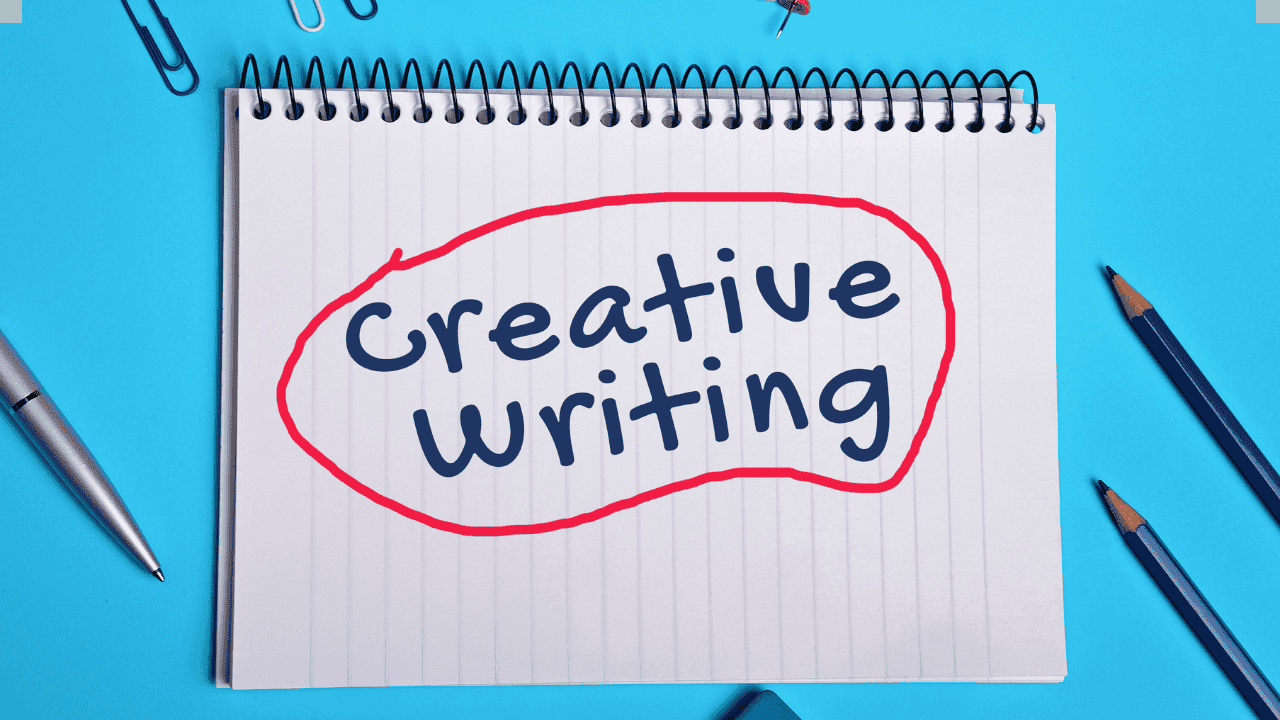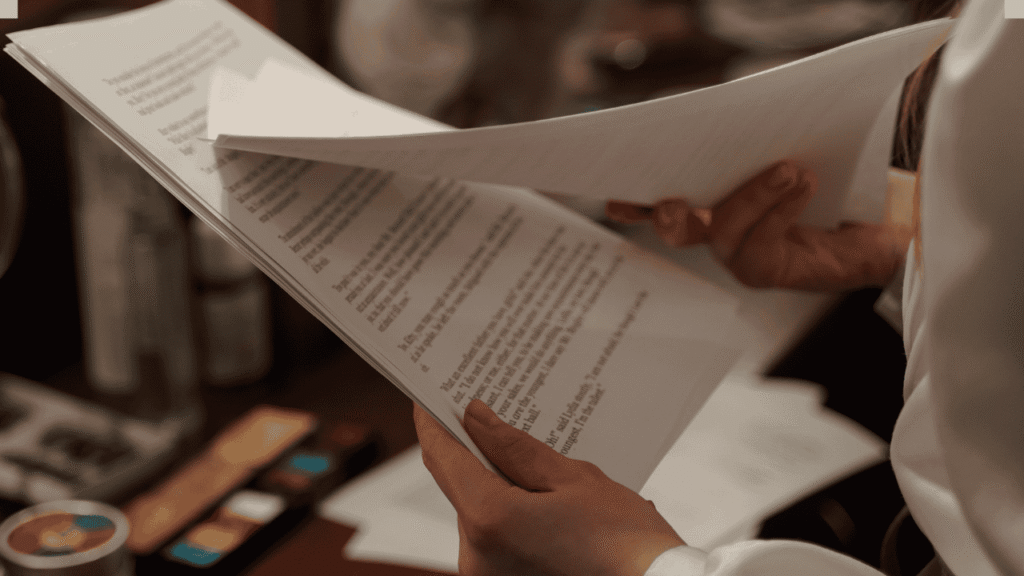
Why Learn Creative Writing?
If you’ve ever imagined telling your own stories, writing a poem that moves someone, or putting emotions into words that others can relate to, learning how to start creative writing is the perfect first step. Creative writing isn’t limited to professional authors—it’s for anyone who has ideas, emotions, or experiences they want to share. It gives voice to imagination and transforms thoughts into something tangible, something that can touch people across cultures and time.
Unlike formal or academic writing, creative writing thrives on freedom. There are no rigid rules or templates—only the desire to communicate meaning through artful language. It’s a process of exploration, where mistakes lead to breakthroughs and words evolve into powerful stories.
For creative writing beginners, the benefits go far beyond storytelling. It sharpens your communication skills, boosts empathy, and improves focus. It helps you understand yourself and the world around you in ways ordinary writing never could. Whether you dream of publishing a novel or simply journaling for personal growth, this guide will show you how to build the mindset, habits, and techniques that every creative writer needs.
What Is Creative Writing (and What It Isn’t)?
To get started writing, you first need to understand what creative writing truly is—and what it’s not. The term “creative writing” often brings to mind novels and poetry, but it encompasses much more. At its heart, creative writing is any form of writing that uses imagination, originality, and artistic expression to convey meaning. It focuses on storytelling, character, emotion, and beauty rather than pure information.
What Creative Writing Isn’t
Many people mistake technical or informational writing for creativity. But while all writing requires skill, not all of it is creative. Academic essays, instruction manuals, news articles, and research papers aim to deliver facts clearly and objectively. They focus on precision and structure, not emotion or artistry. For instance, a scientific report about climate data is factual writing, not creative expression—it tells you what is, not what it feels like.
What Creative Writing Is
Creative writing is the opposite—it’s expressive, exploratory, and emotional. It’s about using language to create experiences, characters, and worlds that resonate with readers. You might use metaphors to describe heartbreak, dialogue to reveal a character’s secret, or vivid imagery to bring a setting to life. Whether it’s fiction, poetry, memoir, or even blogging, creative writing invites readers to feel something.
The magic of creative writing lies in its ability to connect—writer to reader, mind to mind, heart to heart. Through imagination, writers turn simple words into something meaningful, lasting, and deeply human.
Types of Creative Writing (with Examples)
Once you understand what creative writing means, the next step is to explore the different types of creative writing available to you. Each form has its own rhythm, techniques, and goals—but all share the same foundation: creativity and expression.

1. Poetry
Poetry is one of the oldest and most powerful forms of creative writing. It distills emotion and thought into carefully chosen words, arranged in rhythm or free form. Through poetry, writers can explore love, grief, joy, nature, or identity using imagery and sound to move readers.
You can experiment with haiku, sonnets, limericks, free verse, or spoken word. Poetry doesn’t demand rhyme or meter—it only asks for honesty and imagination.
Example:
“The sky unfolded its quiet sigh,
A whisper of light before goodbye.
The sun withdrew its golden hue,
Leaving dreams for stars to pursue.”

2. Short Stories
Short stories pack powerful storytelling into a few pages. They often focus on one event or emotional turning point, allowing readers to experience something complete yet concise. Writing short fiction is an excellent way to practice structure, dialogue, and pacing without the commitment of a full novel.
Example (Flash Fiction, 100 words):
The bus pulled away, leaving the old man on the corner. He clutched the worn photograph, its edges soft from years of hope. Every morning he waited at the same stop, watching the same faces pass. Once, a woman with green eyes had promised to return. Fifty winters later, he still believed her.

3. Novels
Novels are long-form fiction that allow for deep world-building, layered plots, and complex character development. They take months or even years to craft, but they also offer immense creative freedom. Writing a novel teaches discipline, planning, and emotional endurance.
Whether you write romance, mystery, or fantasy, a novel allows you to shape entire universes through your words. It’s where you learn to sustain tension, craft arcs, and develop voice.

4. Plays and Scripts
Writing plays or screenplays involves crafting dialogue, setting, and action that will later come alive through performance. Unlike prose, scripts are meant to be heard and seen. Every line must serve the story’s rhythm and the audience’s emotional journey.
Scriptwriting develops your ear for dialogue and teaches brevity. Each word must carry weight since visual storytelling does the rest.
5. Memoirs and Personal Essays
Memoirs transform lived experiences into meaningful narratives. They don’t just tell what happened—they reflect on why it mattered. Writing a memoir is an act of courage and introspection, turning personal truth into universal insight.
Personal essays, on the other hand, are smaller snapshots of experience—perfect for beginners. They can be funny, emotional, or philosophical but always authentic.
6. Flash Fiction
Flash fiction is storytelling stripped down to its bare essentials—stories under 1,000 words that still carry impact. Every sentence matters; there’s no room for excess. Flash fiction is an excellent exercise for learning conciseness and emotional economy.
7. Song Lyrics
Songwriting is creative writing in its most musical form. Lyrics combine rhythm, rhyme, and emotion to tell stories that resonate through sound. Like poetry, lyrics rely on metaphor and structure—but also on melody and flow.
8. Speeches
A great speech uses storytelling to inspire action or evoke emotion. Speechwriting requires understanding audience psychology and rhythm of delivery. Creative techniques—like repetition, imagery, and pacing—turn ordinary speeches into unforgettable moments.
9. Blogging and Online Stories
Blogging is today’s most accessible form of creative writing. It merges narrative and education, allowing writers to share ideas, lessons, and stories globally. Whether it’s personal storytelling, lifestyle writing, or serialized fiction, blogging empowers anyone to publish instantly and build a loyal readership.

How to Start Creative Writing (10 Practical Steps for Beginners)
Now that you know the different types of creative writing, let’s look at how to actually begin. The following creative writing tips will help you build confidence, develop skill, and stay motivated through every stage of your journey.
1. Read Widely to Find Inspiration
Reading is fuel for creativity. The more you read—fiction, essays, poetry, or even scripts—the richer your imagination becomes. Pay attention to how authors create tension, introduce characters, or build emotional depth. Great writers are observant readers first.
Reading outside your comfort zone also broadens your voice. A fantasy novel might teach pacing; a memoir might teach vulnerability. Every book leaves behind a tool you can use in your own writing.
2. Start with Freewriting
Freewriting is one of the most liberating creative exercises. Set a timer for 10–15 minutes and write whatever comes to mind—no editing, no backspacing, no censorship.
This exercise breaks through perfectionism and reveals hidden ideas. You might start with nonsense and end with a story seed. Many professional writers use freewriting to warm up their creativity before serious projects.
3. Create a Writing Space
Your environment influences your mindset. Find a space that encourages creativity—somewhere quiet, inspiring, and free from distraction. A small desk, soft lighting, or even background café sounds can set the mood.
Having a designated space trains your brain to associate that spot with writing. It’s not about luxury; it’s about consistency and comfort.
4. Begin with Short Pieces
Start small. Writing shorter works like poems, flash fiction, or essays helps you experiment with tone, pacing, and emotion without pressure. These small wins build confidence and discipline—two of the most important qualities in creative writing.
Over time, you’ll naturally grow into longer projects such as novellas or full-length novels.
5. Use a Writing Notebook to Capture Ideas
Every creative writer should carry an “idea vault.” Inspiration can strike anywhere—a snippet of dialogue overheard on the train, an image in a dream, or a random sentence that just feels right.
Write these down immediately. Later, when you sit to write, you’ll have a treasure chest of creative writing ideas waiting to be developed. Apps like Evernote or Notion can be useful digital alternatives.
6. Practice Writing Prompts
Prompts are a writer’s best friend. They remove the fear of the blank page by giving you a place to start. Use them as springboards to explore new genres or emotions.
Example prompt: “Write a letter from a future version of yourself to the present you.”
Prompts spark imagination, and practicing them regularly strengthens creativity, adaptability, and confidence.
7. Don’t Fear the First Draft
Perfectionism kills creativity. The first draft is supposed to be messy—it’s raw clay you’ll later shape into art. Focus on getting your ideas out without judgment or hesitation.
Editing comes later; the act of writing itself is what matters most. Even professional authors write multiple drafts before publishing.
8. Seek Constructive Feedback
Joining writing groups, workshops, or online communities helps you improve faster. Feedback from others reveals blind spots you might miss. Constructive criticism, when delivered kindly, is one of the most valuable tools for growth.
Platforms like Medium, Wattpad, or local writing circles are great for sharing your work and connecting with fellow writers.
9. Set Realistic Goals
The key to consistency is manageable goals. Start with something small, like writing 300 words a day or finishing one short story per month. Small habits compound over time, turning creative writing into a lifelong skill instead of an occasional hobby.
10. Keep Writing, Even When It’s Hard
Writer’s block, doubt, and distraction will show up—but discipline is what separates dreamers from writers. Write anyway. Some days your words will flow; other days they’ll stumble—but each page strengthens your voice.
Remember: even a few sentences a day is progress. The only way to become a better writer is to keep writing.

Best Tools and Resources for Creative Writers
Thankfully, creative writing has never been more accessible. With the right tools, you can organize ideas, edit efficiently, and even connect with readers worldwide.
- Grammar & Editing: Grammarly, Hemingway Editor, ProWritingAid
- Writing Platforms: Medium, Wattpad, Substack
- Courses for Beginners: Udemy and Coursera offer structured programs on fiction, poetry, and storytelling.
- Idea Management: Notion, Google Docs, Evernote for brainstorming and drafts
Every Story Starts Somewhere
Learning how to start creative writing is about more than mastering techniques—it’s about embracing creativity as a lifelong companion. Each story you write, each poem you attempt, brings you closer to understanding your own perspective and voice.
No one begins as an expert. Every writer you admire once sat before a blank page wondering if they were good enough. The difference is, they began.
So take that first step. Write a paragraph today. Scribble down a dream, a memory, or an idea that won’t let go. Your story doesn’t have to be perfect—it just has to be yours.
Because in the end, every masterpiece begins with the same thing: a single word.
Read More: Analytics Certification for Career Growth 2026


